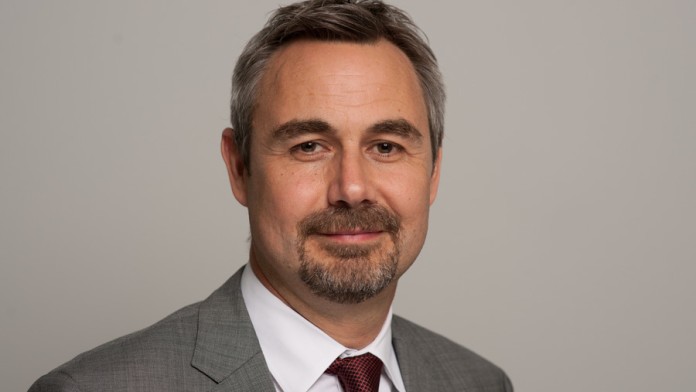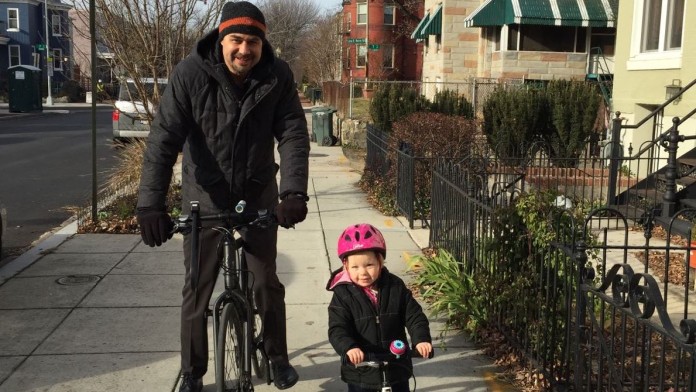News from 2018-12-12 / KfW Development Bank
"Technology is attractive"

For about 20 years, Holger Dalkmann has been working on global transport issues. After an extended period at the World Resources Institute in Washington, he now works as a freelance expert and consultant. In an interview, he explains why technology is “attractive”, what demand is like in Africa, and why sustainable mobility has a lot to do with green energy.
What do you associate with the term "sustainable urban mobility"?
Lots of different things: In the future, mobility needs to be climate friendly, non-polluting, safe and accessible to everyone. This means it should emit as few CO2 emissions as possible, should not pollute the air in our cities, and also should not generate too much noise. Furthermore, all residents of a city should be able to get to work, school or the hospital quickly and easily. And all of this has to be affordable for poorer members of society, too.
That's quite a lot of criteria for the transport systems of tomorrow. Modern mobility has become a key issue in industrialised countries. What's the situation like in developing countries?
First of all, I would distinguish between very poor countries and emerging economies like China and India. Sustainable urban mobility has long been an issue in emerging economies too, not least due to the high level of air pollution in cities. These countries are also the origin of lots of innovations, some of which go far beyond the developments that industrialised countries offer. However, things look a lot different in the world's poorest regions. There, it is less about transitioning from one existing mobility system to another, and much more about establishing basic infrastructure in the first place.
So does that mean that these countries could skip certain phases of technology?
Absolutely, it is important to take a different path to industrialised countries away from the combustion engine and personal mobility. This would help to avoid the negative effects that have become so visible in the north.
What does that involve exactly?
Let's look at Botswana as an example. The general level of motorisation there is still relatively low; not even the capital city has a proper public transport system. So, the challenge there is to create and organise a transport system that improves the way people get from A to B. If you have the right approach from the outset, you can set up an efficient, clean and safe transport system. Countries like Botswana can learn from our mistakes and use new technology – adapted to local conditions – to create modern, sustainable solutions.
That all sounds good in theory. But how exactly do you put it into practice? Are there any strategies?
The general rule of thumb is: first walk, then cycle, then build public transport. This approach means you can reach the majority of the population, particularly in poor countries. In Africa, for instance, only 5 to 10 per cent of people have a car. They rely on other forms of transport, particularly methods known as non-motorised transport, i.e. walking and cycling. Buses, railway systems, group taxi services, etc., are then expected to follow in a third phase. Of course, this is the ideal scenario and won't always work in every case. However, it doesn't really matter exactly what order things take; the main point is that transport is planned in an integrated approach. Unfortunately, this only happens in a few countries due to a lack of capacity.

Do you really believe that you can skip the personal mobility stage in developing countries, even though everyone there buys a car as soon as they can afford one?
More political intent is definitely needed here. However, in technical terms, it is pretty feasible. And there are some good examples, too. Take the matatus in Kenya, for instance, which can be controlled and used very efficiently with apps. The apps show exactly where the shared taxis are currently located and how long it will take to travel to a destination. Customers can even pay on their phones. Ultimately, the challenge will be to integrate these stand-alone solutions to create a holistic one. After all, public transport systems capable of transporting large numbers of people on a daily basis are an essential part of any global city.
And what about the human factor? Decisions like these are often irrational and driven by status...
I can perceive a certain amount of change here. Nowadays, young people are more likely to define their status based on their mobile phones as opposed to their cars. In lots of northern countries, they aren't even taking their driving test anymore because they would prefer to use their phones to access modern, flexible mobility concepts rather than spend ages looking for a parking space in congested cities. This love of technology is especially strong in developing countries.
Technology is sexy in these countries?
Yes, technology is definitely sexy. New solutions are sexy, gadgets are cool. This presents us with a huge opportunity. Technology can be sold as a status symbol, which makes it a vehicle for change. As such, technology is a new trigger for transformation, but it is not the universal cure.
One problem in developing countries is the lack of electricity.
That's right. That's why you have to combine mobility concepts with energy concepts. Especially in areas of Africa, where there is plenty of sun, wind and water for renewable energy, the two should come as a package. And, of course, this doesn't just apply to Africa, even though the availability of renewable energy sources makes it the ideal setting for this. From a climate perspective, there is no point in increasing the number of electric vehicles on the road if you are lacking power elsewhere and the power you have is not green.
So what exactly does this mean for development institutes?
When they're developing project pipelines in the transport sector, they always need to factor in the issue of energy. Very few of them currently do this.
How long will it take before we have really sustainable mobility – in the north? And when will it arrive in the south?
Really forward thinking cities and countries will achieve it in the next five years. Cities like Amsterdam and Copenhagen aren't far off now; environmental alternatives already make up over 75 per cent of transport there. This will help them to really boost their appeal and, ultimately, their profitability, too. They will be the winners. The losers will then have to find a way to catch up.
And in developing countries?
Very different. At the end of the day, it will depend on which modified solutions are available and how much support they get from sponsors. After all, one thing is very clear: without external funding, countries like Botswana and Zambia won't be able to transition into the age of sustainable mobility at all.
The interview was conducted by Friederike Bauer

Share page
To share the content of this page with your network, click on one of the icons below.
Note on data protection: When you share content, your personal data is transferred to the selected network.
Data protection
Alternatively, you can also copy the short link: https://www.kfw-entwicklungsbank.de/s/enzBWrMC.B55A
Copy link Link copied